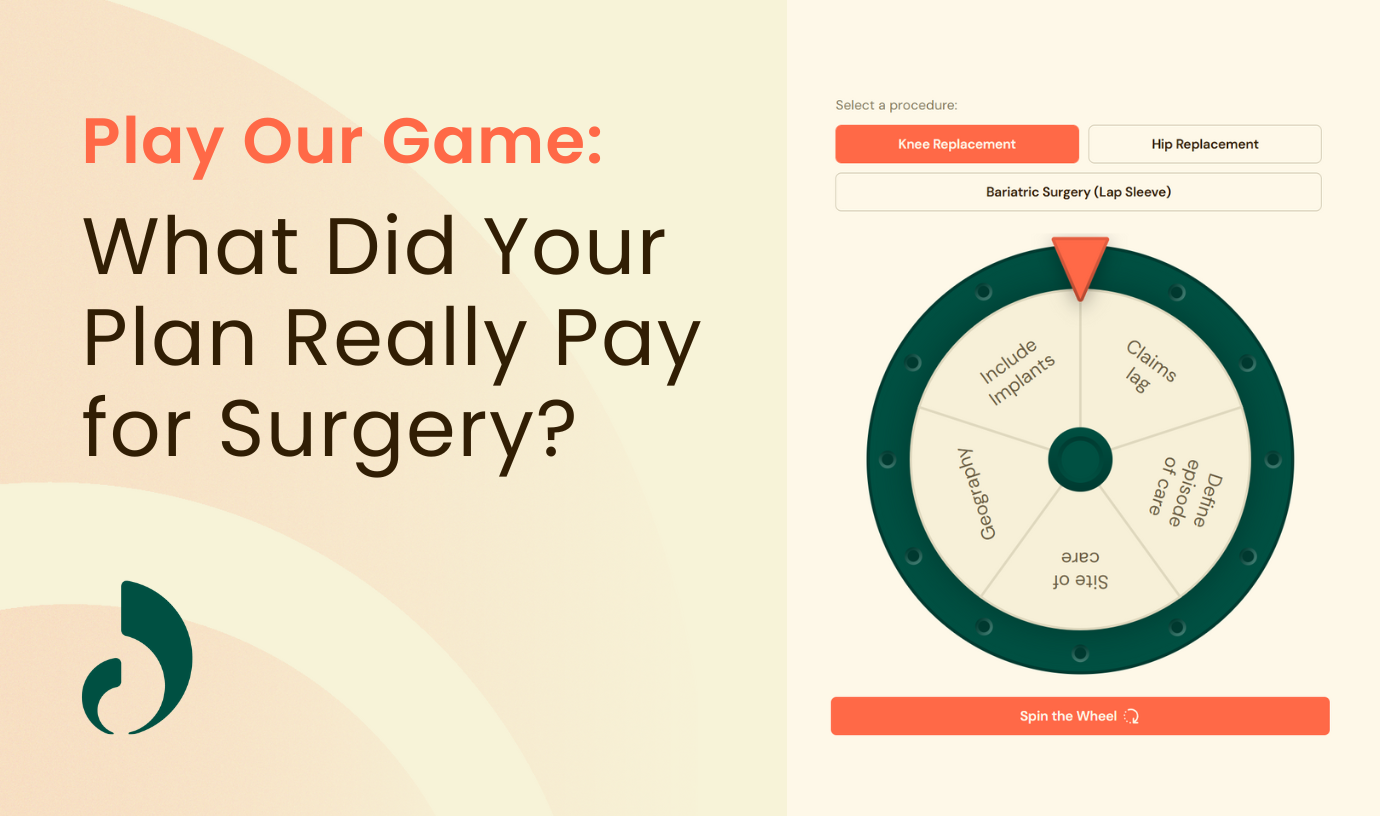HR leaders often worry that if they invest in a high-quality, independent Center of Excellence (COE) for specialty care, employees won’t use it. The concern is understandable, as navigating employee benefits—especially for major events like surgery or cancer—can feel like a big ask, even when there’s an incentive attached.
At their core, independent COEs make it easier for employees to choose high-quality care and avoid lower-value treatment paths. At the same time, employers can reduce unnecessary complications, readmissions and spiraling costs down the road.
When incentives are thoughtfully designed, everyone wins. Waiving cost-sharing for surgery, reimbursing travel expenses and offering concierge support are all strategic steps you can take to motivate employees to engage with your COE benefits.
Whether you’re searching for the right COE vendor or evaluating your existing COE provider, these best-in-class incentives are proven to drive utilization.
1. Waive Cost-Share to Reduce Barriers to Care
For many employees, cost is the No. 1 reason they delay or avoid surgery, infusions or other specialty treatments, even when those services are necessary. High deductibles and unpredictable bills can make care feel out of reach. That’s where independent COEs provide a meaningful difference.
Employers who partner with COEs can design incentives that eliminate or significantly reduce out-of-pocket costs. The best COE surgery incentives waive cost-sharing entirely for procedures performed within their network. That means no deductibles, no coinsurance and no copays. Others may offer reduced coinsurance or modify cost-sharing based on the plan design, still creating a more affordable path to care.
“Waiving the cost share has been the number one reason that this program has been successful,” says Sarah Richards, Director of Benefits at Red Bull. “It’s just such an incredible tagline that immediately gets their attention in a way that nothing else will. Suddenly, they’re paying attention when you say, ‘Hey, do you want to get this for free?’”
If enrolled in a high-deductible health plan (HDHP), employees who use Lantern owe the IRS minimum deductible amount, which for 2025 is $1,650 (or lower if the employee already met some of their deductible through other healthcare services).
“We’d rather collect the deductible on the backend of the year because if an employee fills a couple of medications or gets other healthcare, those go toward the deductible to potentially meet that minimum amount,” says Tabitha Pittman, Director of Compensation & Benefits at Integrity.
COEs can provide a clear, cost-effective alternative, helping employees avoid financial strain while improving health outcomes.
2. Include Comprehensive Cancer Support with Your COE Solution
Cancer is one of the most complex and emotionally charged conditions employees face, and one where support must include more than financial incentives.
Independent COEs are uniquely positioned to bring together high-quality, evidence-based treatment with dedicated care coordination, helping employees and their families navigate a difficult diagnosis with confidence and clarity.
At Lantern, we believe the most effective incentives are the ones that offer our members tangible value. For cancer care, our strategy starts with accelerated access. We ensure members can get an initial oncology appointment in under 10 days, avoiding the common delays that often derail early treatment.
Our complete oncology solution covers every cancer diagnosis, regardless of type or stage. We offer 100% local, inclusive coverage across the country.
“Almost 30% of our members with cancer engage with Lantern and stay engaged,” Richards says. “That’s huge, especially for cancers where they’re like, ‘I need more support than I get from my doctor’s office.’ There’s such value there, and they’re seeing that value and then coming back to me and even my leaders to share their stories. And it’s truly one of the reasons where I’m like, ‘This is why I’m in benefits.’”
3. Incentivize with Employee Healthcare Travel Benefits
When employees need to travel for specialty care, the added costs can become a barrier. Independent COEs often include travel reimbursements as part of their employee incentive programs, ensuring that care remains accessible without creating financial stress.
Lantern’s COE program can cover key travel expenses such as transportation, lodging and meals, all tailored to each member’s unique situation. The Care Team manages these logistics seamlessly, removing the administrative burden for both the member and the employer.
“We cover the travel for the patient and a family member or caregiver,” says Scott Kirschner, Senior Director of Total Benefits at Greystar. “About half of our workforce is hourly and we don’t want that financial barrier to care to come into play like, ‘I would go to Mass General, but I can’t afford the trip.’”
Here are a few of the ways top COEs help cover travel-related costs:
Travel Coordination: The COE team arranges logistics like airfare, hotel stays, ground transportation and daily meals.
Prepaid Debit Cards: Many programs offer prepaid debit cards to cover approved travel expenses upfront, eliminating the need for members to pay out of pocket and wait for reimbursement.
These travel supports don’t just improve access, but make it easier for employees to say “yes” to high-quality care, no matter where it’s located.
4. Provide White-Glove Support from a Personal Care Advocate
What truly sets leading independent COEs apart isn’t just the quality of care, but the quality of support. At Lantern, we provide every employee with a dedicated Care Advocate who acts as their personal guide throughout their journey. It’s a powerful, human-centered incentive that employees consistently find comforting and deeply valuable.
This white-glove approach takes the stress and guesswork out of navigating specialty care. From day one, employees know they have someone in their corner to help, answer questions and coordinate every step, so they can focus on healing.
For example, Greystar employee Cecily H. says she put off a needed surgery for over a year due to cost. But after reaching out to Lantern, she not only discovered she could complete the surgery for free, but she was connected with a Care Advocate named Ashley to coordinate the surgery on her behalf.
“She honestly helped me throughout the whole process,” Cecily says. “Ashley answered every question I had on how to even get started, how to file a claim, what doctors to go to. She was always so helpful and kind and very patient, and I couldn’t have asked for a better representative.” (Watch the video with Cecily)
For employees, hands-on support feels less like a benefit and more like a lifeline. For employers, it means fewer delays, better outcomes and higher satisfaction across the board.
Care Advocates typically provide:
Concierge Support: From scheduling appointments and arranging diagnostic tests to managing follow-ups and coordinating with providers, Care Advocates handle the logistics, so employees don’t have to.
Personalized Guidance: As a single point of contact, the Care Advocate walks with the employee through the entire episode of care, ensuring they always know what to expect and where to turn.
Treatment Plan Evaluation: Care Advocates and Oncology Nurse Navigators assess each member’s treatment plan and facilitate second-opinion reviews when needed.

Rethink Incentives to Drive Real Engagement
When it comes to specialty care, access alone isn’t enough. To truly drive engagement, employers need to offer meaningful healthcare incentive plan designs that lower barriers, build trust and support employees every step of the way.
The value of a COE program goes beyond clinical outcomes; it also delivers measurable ROI. By guiding employees to high-quality providers, COEs help reduce unnecessary procedures, avoid complications and prevent costly readmissions.




